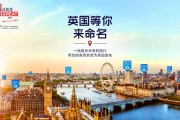There are arguably few people who know more about China and its consumers than Tom Doctoroff. You may be familiar with his popular book titled, ‘Billions: Selling to the New Chinese Consumer‘ which has been well-received by Chinese and Western readers respectively.
Tom has lived and worked in Shanghai since 1998, previously heading up the Greater China office at one of the largest and most respected advertising agencies in the world, JWT. Now he is the agency’s CEO for the entire North Asia region covering countries such as Japan, China, Hong Kong, and Korea – not an easy task. His key clients include: Unilever, DeBeers, HSBC, InBev, Ford, Nokia and Microsoft and leading local enterprises such as Lenovo, COFCO, renren.com, China Unicom, Yili dairy and Anta shoes.
Not surprisingly Tom’s knowledge and experience has resulted in him being interviewed countless number of times. He has regularly appeared on NBC’s The Today Show, Bloomberg and National Public Radio and is frequently featured in publications ranging from the Financial Times, Wall Street Journal and the New York Times. He has also been a keynote a speaker at a wide range of events. In 2004, he was a recipient of the prestigious “Magnolia Government Award” (白玉兰政府纪念奖 – Bái yùlán zhèngfǔ jìniàn jiǎng) in recognition of his contribution to Shanghai’s economic development.
Luckily, chinaSMACK has been able to steal Tom away from his busy schedule to interview him with hopefully a few questions he has not come across before. Without further a do, it’s with great pleasure that I introduce Tom Doctoroff:
We’ll start off with an easy one, you have been out living in China and Hong Kong for over 17 years, how good would you say your Chinese language skills are now?
My Chinese “skills” are very much a question of the eye of the beholder. Foreigners think I’m fluent. Locals think I speak quite well for a foreigner. But I always warn them that, after 30 minutes, they will be much less impressed. That said, I can train in Chinese, conduct interviews in Chinese (under duress) and communicate easily with staff and clients in Chinese, assuming they are a bit tolerant. Chinese is interesting; the better you speak, the more you realize there is no such thing as absolute fluency. And it gets tougher as you progress. The curve never flattens. A translator still comes in handy in most cases.
What was your career path to leading up to becoming CEO of JWT North Asia?
My career path was:
a) raised by a mother who was a psychologist and always encouraged her kids to ask “Why?”
b) BA in Psychology at Northwestern University
c) a job in New York at a small marketing consulting firm
d) an MBA at University of Chicago
e) three years at Leo Burnett working on trash bags (Glad, First Brands) and McDonalds (where I realized I wasn’t a process person),
f) two years at JWT Chicago
g) four years based in Hong Kong as a regional account director for our multinational clients such as Kraft, Citibank, Warner Lambert
and
h) assumption of Managing Director of JWT Shanghai in 1998. I took over the China role in 2000 and then was promoted to Northeast Asia in 2002, I believe. Japan was added to my remit in 2009 and I do love working with the Japanese as well. It’s an interesting contrast with China.
It seems many of the ‘big’ Chinese ad agenices are not headed up by Chinese people, why is this the case? And did Westerners bring the “advertising Industry” to China?
Well, yes, they did. But they no longer “control” it in any way. The first clients who advertised big — i.e. with any degree of professionalism — were the large FMCG companies such as Unilever and P&G. When I arrived in Shanghai, Unilever was approximately 70% of our revenue. Today, this is certainly not the case. Local brands are absolutely critical to any agency’s bottom and top lines. If a 4As company doesn’t have a roster of local clients, they are simply not a player on the Chinese adscape.
The fact that there are still many expatriates who run agencies — actually, there are fewer of them now today, but foreigners are still reasonably represented at the top and down a few levels as well — is one of the disappointments of our industry (I include expatriate Chinese from Hong Kong, Taiwan, Malaysia, Singapore in this group).
Of course, there will always be a need for individuals with an “internationalista” outlook, regardless of nationality or whether they work on local or multinational accounts. But advertising, as an industry, has had difficulty in developing senior local talent. It’s not a question of salary, that’s for sure. Nor is it necessarily a failure of “intent to groom”.
The biggest challenge is, simply put, advertising is not fundamentally respected as a career path for many locals. They prefer careers that are more concrete, with a clearer “return on investment.” An adman’s key strength is the ability to articulate the abstract and lead clients to embrace what can’t be proven. We have to be conceptual warriors and this doesn’t appeal to many Chinese who tend to take refuge in the concrete. There are too many talented 35 year olds who abandon the industry for a more “respectable” career. The ones who stick with it, the ones who have the capacity to inspire, are worth their weight in gold and we do everything possible to retain and promote them.
Moving onto clients then, JWT China has both state-owned and private sector clients. How would you describe working with the state-owned organisations?
All local companies have certain things in common. They are hierarchical and the big boss wields absolute control. So maintaining close relationships with the CEO, or founder, is absolutely critical. Establishing trust, rooted in a combination of value-added and empathy, is absolutely critical. That said, there are differences.
Large state-owned enterprises tend to be much more Byzantine in terms of decision making, with one eye focused on the market and the other on political imperatives. Smaller local (private) enterprises are more entrepreneurial, more apt to take risks and decide things relatively quickly. They also tend to be more receptive to “unsafe” creative.
State-owned ‘Air China’ commercial
(agency credit to Ogilvy & Mather – Beijing Branch)
The “joys” of working with local companies, despite the operational and relationship management challenges, is that they are genuinely passionate about their brands. Their ambitions are huge. They also have a natural appreciation of the ins and outs of both the Chinese market and the Chinese consumer, leading bolder experimentation, assuming the stars are aligned in terms of clear objectives and open communication.
From an ad agency’s perspective, it’s very much high-risk, high-return. I’m as proud of the work we do for our local clients such as Anta or COFCO (China’s largest food conglomerate) as I am from some of our largest multinational companies such as Ford or Nokia or Microsoft.
Supposedly Chinese marketing managers find it very difficult to adopt new creative ideas, if you could say five things to these people what would they be?
The pitch I always give to local business leaders is simple: robust brand equity — i.e. active consumer loyalty for a brand — leads to premium prices and a high P/E ratio. Beloved brands are, to state the obvious, emotional propositions, ones that fuse functional and emotional appeal. Most need convincing that when function and emotion are “aligned,” they are mutually-reinforcing, and there is no need to “choose” between tactical and thematic, between nuts and bolts and evocative messages. But they need a reorientation to help them grasp how “brand ideas” are constructed and I think JWT is quite good at translating global brand building truths into a “paradigm” or “framework” that leads to long-term propositions and justifies price premiums — of both their brands and JWT’s services!
So, to answer your question, we must always reinforce the link between business imperatives and creativity. We can never take it for granted that this tenet is implicit. I can’t think of a “five things” to say to them, other than what I’ve mentioned. But the analytical robustness of any recommendation has to be empirically bullet proof. Once they endorse the logical thought flow, from underlying business problem to creative solution, minds open, and decision makers are able to put themselves more easily in consumers’ shoes, folks who, it goes without saying, do appreciate creativity.
JWT places a lot of importance on local knowledge. With China being such a vast and diverse place with various tierings, and customs and values of people differing from province to province, how does one advertise to the Chinese population? Is there a one size fits all?
Of course, one size doesn’t fit all. But there are “unifying themes” and “variations” on these themes. It’s like a Bach Fugue; there is a primary melody with interpretations of that to address target consumer and geographic considerations. Some roll their eyes when I harp on about a Chinese “worldview” that is fundamentally different from Westerners’ basic motivations. But smirks be damned. In order to touch hearts, brands need to be brought into alignment with this worldview.
After 13 years here, I am fundamentally convinced that there is a unifying “Confucian” conflict — between self-protection and status projection — that brands have a fundamental role in resolving. Unlike practically any other country (Korea and Vietnam come closest), China is both boldly ambitious (ladders are meant to be climbed and meritocracy is a cherished value) and regimented, with hierarchical and procedural booby traps for anyone who hasn’t mastered the “system.” This tension between upward mobility and fear-based conformism shows up everywhere, in every business meetings, in every struggle with a mother-in-law, in every new generation release on the internet.
Brands that help consumers simultaneously stand out and fit in have the greatest appeal. Diamonds, for example, are popular because their sparkle is conspicuous but, at the same time, elegant and understated. The same goes for Mont Blanc’s six-point logo. Rejoice shampoo’s proposition fuses confidence and softness.
All communications needs to position products as a “means to an end,” with clear return on investment. And all products must dramatize “public consumption” in order to justify a price premium.
That said, this “unifying theme” needs to be interpreted for different socioeconomic tiers. In lower-tier markets, for example, definitions of success are more short-term, more inextricably linked to home and hearth. We also tend to emphasise that protection side of the equation because non-middle class consumers’ — people who have benefited less from waves of economic reform — are less convinced that the world is safe.
Likewise, brands are less familiar in Tiers 3-5 cities so communications have to be simpler and more direct and the role of in-store experience and reassurance is even more fundamental than in primary markets. And young consumers are definitely more into self-expression — though this is about ego affirmation, not Western individualism, a point many of my industry colleagues disagree with me on — than older age cohorts.
So, yes, age and income are “variables” that very much need to be considered and, no, one size does not fit all. But you don’t need to completely reinvent the wheel every time you develop a strategy for a different market target.
I also believe the claim “China is many countries” is often (but not always) a canard, a red herring. China is unified by timeless cultural imperatives. We frequently confuse geographic discrepancy with socio-economic and age differences, two fundamental confounding variables.
And now a question I know you get asked all the time – how do brands build a name across the Chinese Mainland? Western firms seem to roll into China with products, such as the Apple iPhone, but really only consumers living in higher tiering cities such as Beijing and Shanghai can afford them. Do big brands like Apple need to create an almost ‘value’ range to reach the lower-tier consumers of China? Are the lower tier consumers even on Western brand agendas?
There is a middle class in every city (click here to watch Tom educating Microsoft about the Chinese ‘middle class’). Once you realize that individuals earning 20,000 RMB per month in both Shanghai and Wuhan have more in common with each other than do denizens of specific cities in at different socio-economic strata, things become simpler.
Apple is a middle class hit…everywhere. Inland consumers who can afford, say, a Ford Focus are almost as sophisticated in terms of buying an auto as their coastal cousins, with the caveat that care must be taken to keep messages simpler for first-time, usually lower-tier, buyers.
That said, brand tiering is a fundamental challenge for brands as they expand geographically. Practically all of Procter & Gambles products have cheaper variants and they have pursued this strategy with a relative degree of success. In the Apple era, Nokia‘s non-smart phone range at the rural fringe is a powerful weapon to win “the next billion” mobile phone buyers.
Chinese revere scale and “big brands” — i.e. ones that extend across price tiers — reassure; to boot, any brand that does not boast both margin and scale will have a difficult time taming unwieldy distribution channels. However, we need to keep in mind that the “cheaper” products are targeted at less affluent consumers.
Extreme care must be taken to avoid equity adulteration of the premium variants as the brand is extended downward. This is a tricky minuet and some of the best marketers have fallen by upsetting a delicate price-value equation. As a rule, expensive brands should be used to build image and tactical promotion of inexpensive versions should take place closer to the point of purchase.
What would you say are the key differences and similarities between Chinese and Western consumers?
There are two key differences. First, all benefits in China are externalized; Chinese egos are huge — I always say every Chinese has a dragon in his or her heart — and they demand societal acknowledge for their contributions to and success within society. They are not individualistic in a Jeffersonian sense as are Westerners, who respond, in many cases, to “internalized” benefits.
Luxury goods, for example, are a tool for career advancement in China. In the West, they are often appreciated for their own intrinsic quality. In shower gel, the leading Western brands have “sensual indulgence” as a core proposition. In the PRC, the key benefit is “an energizing shower experience that helps me start the day with a kick”. Sometimes, this difference can be quite subtle. Europeans go to spas to relax. Chinese go to recharge batteries.
Second, there is absolutely, positively no cynicism towards brands in China. As said above, they are vital tools of advancement. Furthermore, in a constricted mass media environment and a society with a narrow definition of success, brands are the most powerful badges of identity.
Brand communications is, by far, the freest form of expression and, for that reason, beloved. Of course, the Chinese are suspicious shoppers — they don’t take quality for granted to reassurance in terms of both quality and impact on image is critical — but there isn’t cynicism. We have not entered a post-modern communications era here, and I doubt we will, given fundamental role brands play in consumers’ identities.
It’s worth noting that the digital world differs here too. “Emotional release” is a critical driver — there are already 150 million micro-bloggers! — and this urge is fueled by on-line anonymity. For Facebook to succeed in China, it would have to scrap its “real name” policy. Despite the explosion of life style alternatives and individualism as an aspiration, the Chinese are constricted when it comes to self-expression. In this respect, the internet is a blank canvas on which to paint dreams. Of course, e-commerce is exploding in the PRC, just like anywhere in the world. But, again, “transactional safety” must be reinforced and most cash is usually exchanged only after consumers have been given a chance to kick the tires of a product.
Advertising is about persuasion, I guess this might be a question of Chinese culture, but if the Government said all its people ‘should’, not must, sign-up to a ‘China Mobile’ tariff do you think they would?
Interesting question. Let’s put it this way — it would certainly help. The Communist Party is still the quintessence of authority and its “endorsement” would reassure many safety-seeking buyers. To boot, the backing of the government would translate into immeasurable distribution/channel clout.
On a lighter note, people may not realise this but you were actually lucky enough to be an Olympic torch bearer at the Beijing Olympics, how did the opportunity come about and what was it like?
I loved being a Torch Bearer. I was invited by a client, Lenovo, that was also an official sponsor of the event. Despite all the propagandistic stage management, the moment my foot hit the pavement — we all got dispatched from busses at our designated running points — the crowd went wild. Not for me, of course, but for the torch and everything it represented about China’s ascension to superpower status.
Adding more emotion to the moment was the Sichuan earthquake, from which the nation was still recovering, and the media furor over the Tibetan protests. People were afraid the Olympics would, in the yes of the world, “fail.” So the Torch relay, at historic juncture, morphed into a national declaration of perseverance. It was moving, even inspiring.
To finish what has been your proudest moment since working at JWT China?
I can’t think of a particular moment, though being a Torch bearer comes close. What I am most proud of is my North Asia management team — me, the creative director, planning director and finance director. We have managed to stay cohesive for thirteen years. This is quite exceptional in China, or anywhere I guess, and a testament to our shared vision and mutual respect.
I’m also proud of the book I wrote, ‘Billions’. It may not be perfect but at least my point of view on what makes Chinese consumers tick is out there for posterity to judge. Finally, JWT’s reputation as apolitical, principled and quality-obsessed makes me happy.
Thank you Tom and xiè xiè.
If you would like to see more from Tom take a look at his blog on Huffington Post.
Don’t forget to
like us
on Facebook.
.














